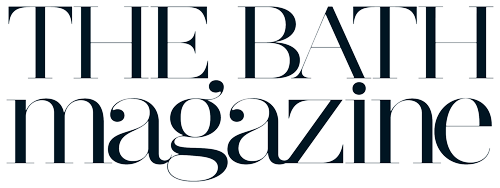What connections can we draw between the assassination of Martin Luther King Jr. and the Black Lives Matter demonstrations? Or the 1968 Republican Convention and the storming of the Capitol on January 6th 2021? The photographs in the exhibition America in Crisis at the American Museum & Gardens draw plenty, says Emma Clegg.
America in Crisis was a ground-breaking Magnum Photos project conceived in 1969 to assess the state of the nation and turn a critical eye on the US at a time of great social, political and cultural change. The project, culminating in a photography exhibition and a book, examined key events in 1968 leading up to Nixon’s inauguration, such as the assassinations of Martin Luther King Jr. and Robert F. Kennedy, the riots in Washington DC, the landmark Civil Rights Act of 1968, and heightened social unrest over the Vietnam War.
In 2022, Saatchi Gallery curated a revised exhibition, creating a unique dialogue between the original historical photographs and new photographic works produced in 2020 by diverse contemporary practitioners during another tumultuous time in America. The updated America in Crisis exhibition will be presented by the American Museum & Gardens from 11 March – 4 July.
We tend to assume that the problems of today are worse than ever, but actually they were present decades before
The exhibition creates a unique dialogue between some of the photographers from the first initiative, among them Bruce Davidson, Elliott Erwitt and Mary Ellen Mark, and the works of contemporary practitioners such as Kris Graves, Balazs Gardi, Zora J Murff, Sheila Pree Bright and Stacy Kranitz. The interaction highlights the themes present in both pivotal periods, confronting the idea of the American Dream with the reality of current events, with contemporary subjects including the 2020 Black Lives Matter demonstrations; #FXCK July 4th, the 2020 rally about police brutality toward women and LGBTQ+; and the Storming of the Capitol on 6 January 2021.
Exhibition curator Sophie Wright – who worked at Magnum as Global Cultural Director for 17 years – was one of three curators, along with Gregory Harris from Atlanta’s High Museum of Art, and LA-based photographer Tara Pixley.
“When things started to kick off with the Black Lives Matter protests in May 2020 I returned to this 1969 project, because there were so many echoes still present in the contemporary situation in the themes that the exhibition and book tackled”, says Sophie. “Then January 6th happened, and this was so visual and so photographed it again seemed hugely pertinent to be capturing that.
“The original project was multi-layered – a book, an exhibition, an installation – and in fact Charles Harbutt, the curator of the original project, also created a short film, so he was interested in the different ways stories could be told with images,” says Sophie.


Above left: Lee Square, Richmond, Virginia, 2020 Courtesy of Sasha Wolf Projects © Kris Graves | Above right: The Republican Convention. Miami, Florida, USA, 1968. © Elliott Erwitt, Magnum Photos
“He was experimenting within the context of the exhibition, and I loved that – it wasn’t just pictures on walls with frames. And even in ’68 there was an exploratory and experiential approach as to how the audience would encounter the images and how different contexts could change the meaning.
“Harbutt conceived of something called the Picture Bandit which was used in 1969 when it was shown at the Riverside Museum in Manhattan. This was a one-armed bandit machine, a randomising device to show the images from the exhibition, referring to the cacophony of photography in the media at that time and in a way the powerlessness of the authors around how those images were disseminated. This is obviously still a big story.”
With a balance of roughly a third historical and two-thirds contemporary work, the exhibition follows the same chapter structure found in the 1969 Magnum publication with titles such as The Streak of Violence, The Deep Roots of Poverty and The Battle for Equality. The three rooms include two rooms as gallery spaces where the work is presented and the final room is the Picture Bandit space where visitors can press a pedal to generate a selection of images shown across multiple screens, both historical and contemporary, which have an unspecified connecting theme.
“That last room talks about what happens when images are out in the world. Also for me it was a way to talk about social media and the image culture online and how it’s fed back into things like January 6th. It’s a self-perpetuating cycle really,” says Sophie.
“In some cases photographers have just photographed one subject and their work is all grouped, but in other cases individual photographers’ work is found across a number of themes. It’s not leading with the authorial voice of the photographer – it’s leading with the themes and issues that we are addressing.”
Comparing work from across the decades creates connections, but contemporary work is naturally borne from a more diverse set of values. “Photography has changed immeasurably over this period. Photographers in ’68/’69 were predominantly male – the only two women in the original selection are Mary Ellen Mark and Eve Arnold. There are many more female practitioners in the contemporary mix and it’s also more diverse in the voices. We have shown the Standing Rock protests [Native American protests against the Dakota Access pipeline] and it was great to include Josué Rivas’ work there in the battle for equality. These considerations were not part of the conversation in ’68/’69”, says Sophie.
Another difference is the context in which the work is produced and consumed. “The main funders of photographers’ work in ’68/’69 were editorial magazines, but this shift has happened within documentary photography where you have a mix of editorial and gallery-based practice,” says Sophie.
“You have extraordinary contemporary photojournalists like Leah Mills who took the images for January 6th – a working Reuters journalist, she’s good at these self-contained iconic images. Or Philip Montgomery who works in that intersection between photojournalism and editorial – he has a strong aesthetic sensibility, extremely contrasting black-and-white work that’s very sculpturally lit, but is dealing with incredibly important issues and working editorially. Or more conceptual documentary photographers with Anastasia Samoylova.
“By the way it’s quite a tough show this – there are wonderful things too and there is joy and hope, but it’s making a real point about the practical reality on the ground versus the mythologising of the American Dream. It’s still something that people hold on to, but the struggles in America have always been there. This is just a reminder of that. The streak of violence in the orginal was about the political assassinations of Kennedy, Martin Luther King and Malcolm X. What has got worse is the militarisation of the police post 9/11 and the gun lobby, which seems impossible to tackle at a political level. We tend to assume that the problems of today are worse than ever, but actually they were present decades before.”
America in Crisis is at the American Museum & Gardens from 11 March to 4 July, Tuesday to Sunday, 10am–5pm (last entry at 4pm); americanmuseum.org
Featured image: The Capitol, Washington, USA, January 6th, 2020 © Balazs Gardi


